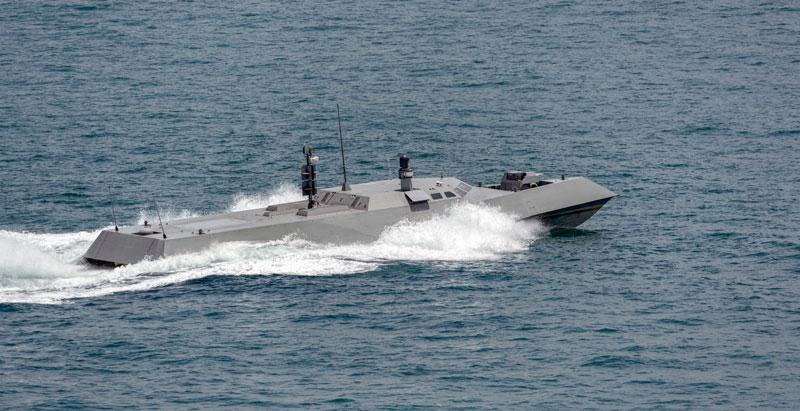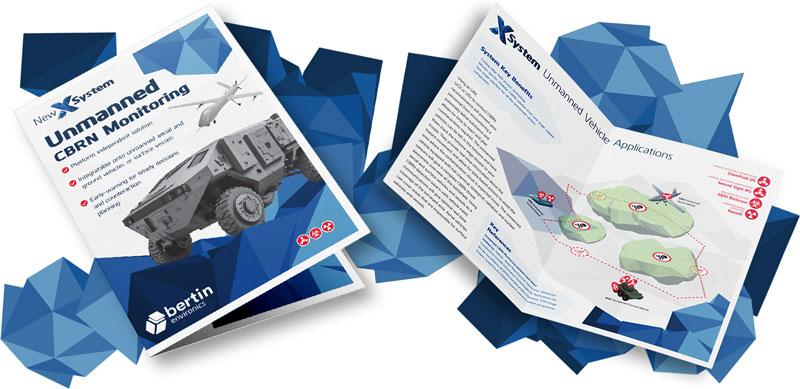Media has been frequently addressing the novel ways of using state-of-the-art technology in modern warfare, such as drones utilizing highly intelligent algorithms for carrying explosives and most recently loitering weapons.
There is frequent news that weapons on autonomous platforms have hit the enemy target, but still autonomous protective measures are not very common. Robots carrying chemical or radiation detectors are already being used to verify if it is safe for operators to enter an attack or accident site. Also, similar applications in flying unmanned platforms are getting more common. But in the naval and maritime environment, the use of Unmanned Surface Vessels (USVs) to carry chemical, radiological, nuclear or biological (CBRN) detectors, is still non-existent or at least very insignificant.
The development of USVs has been happening on a fast pace in recent years, and these platforms have been tested in real naval environment even in missions that lasted several months.
Unmanned Missions in Naval & Maritime Environments
When the mission involves a suspected hazardous environment, sending first responders or soldiers to do the reconnaissance of the hazard area always represents risks. Therefore, any type of unmanned platform would be the preferred reconnaissance method to avoid endangering the health and safety of human operators.

Unmanned Surface Vessel is often shorted to the acronym USV or it can also be colloquially named a “drone boat” or a “drone ship”. These platforms operate on the water surface without a crew and can feature various autonomy levels, from remote control to fully autonomous algorythms.
Besides their important detection applications, unmanned surface vessels also play a crucial role in incident response and containment. When equipped with remotely operated monitoring systems, these vessels can approach and manage hazardous materials, reducing the need for human intervention in dangerous situations. This not only enhances the safety of response teams but also facilitates a quicker and more effective resolution of CBRN incidents.
Bertin Environics CBRN Detection & Monitoring Solutions for Unmanned Surface Vessels (USVs)
The design of the Bertin Environics’ CBRN detectors and monitoring systems makes them easy to integrate onto autonomous platforms. The X-System allows for unmanned use since its components can be operated remotely, providing a two-way communication between the detector and the operator.
The X-System’s chemical detector ChemProX-DS is compact in size and includes in-built communication features, which enables integration with the platform’s wireless communication system. In addition of being a chemical detector, ChemProX-DS acts also as a data management unit and can be used as an integration platform for connecting other sensors into the CBRN monitoring system, thus providing full situational awareness.
RanidX is a small size, rugged radiation detector which communicates seamlessly with ChemProX-DS, and when needed also with the biological detector ENVI BioScout, that can be added to the system to provide information of possible biological threats. When integrated in the system, both RanidX and ENVI BioScout utilize the ChemProX-DS data management and communication features.
In conclusion, the integration of unmanned surface vessels into CBRN detection strategies represents a paradigm shift in maritime security. These autonomous platforms offer a comprehensive and technologically advanced solution to safeguard coastal areas, ports, and waterways from potential CBRN threats, ultimately contributing to a safer and more secure maritime environment.
Would you like to know more?

Download the Unmanned CBRN Monitoring Application Note and gain access to exclusive content on X-System when used in Unmanned Surface Vessels.

BUENOS DIAS, ME INTERESA SABER MAS DETALLADAMENTE SOBRE LOS EQUIPOS DE DETECCION CBRN DE VIA AEREA Y MARITIMA